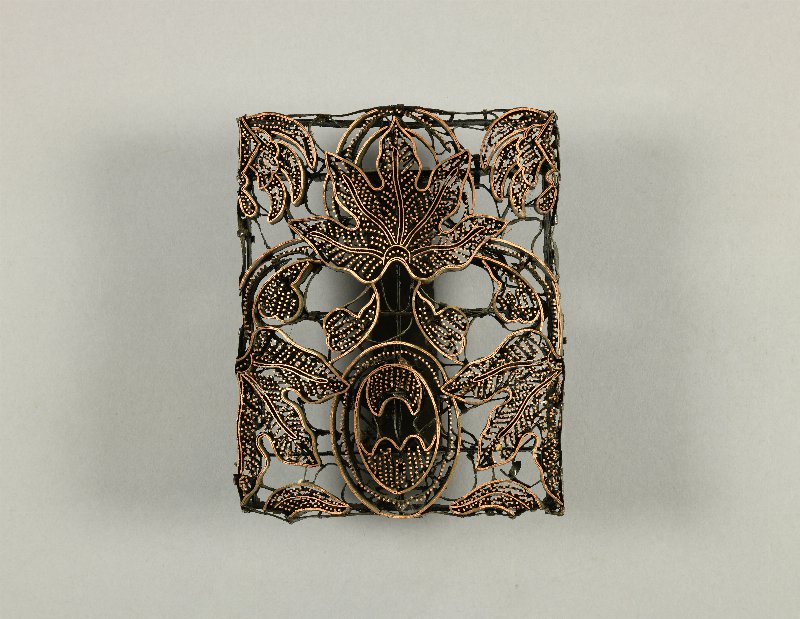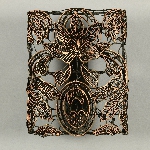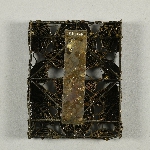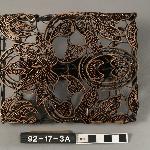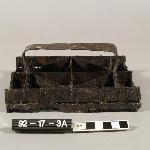Batik Patterning Stamp
92-17-3A
From: Indonesia | Java (uncertain) | Jogjakarta (uncertain)
Curatorial Section: Oceanian
| Native Name | Tjap |
| Object Number | 92-17-3A |
| Current Location | Collections Storage |
| Culture | Javanese |
| Provenience | Indonesia | Java (uncertain) | Jogjakarta (uncertain) |
| Date Made | -1959 |
| Section | Oceanian |
| Materials | Metal |
| Description | Pair of batik patterning stamps (tjap). Leaf design with many dots. Purchased from a small batik workshop in Jogjakarta in 1959. The patterns of Javanese batik, applied before dyeing, were traditionally hand drawn in wax using a small copper container with a slender spout called a tjanting. "About 1860, however, a new method was introduced, in which metal stamps were used to apply the wax... The stamps used are made of thin strips of copper about half an inch wide, set on edge, with short pieces of wire for the dots, all soldered to an open metal handle... Frequently it is desired to stamp both sides of the cloth, in which case a second stamp must be made accurately repeating the design, but reversed..." Albert Buell Lewis |
| Length | 18.5 cm |
| Width | 14.5 cm |
| Depth | 7.5 cm |
| Credit Line | Gift of Mrs. Everett Hawkins, 1992 |
Report problems and issues to digitalmedia@pennmuseum.org.


